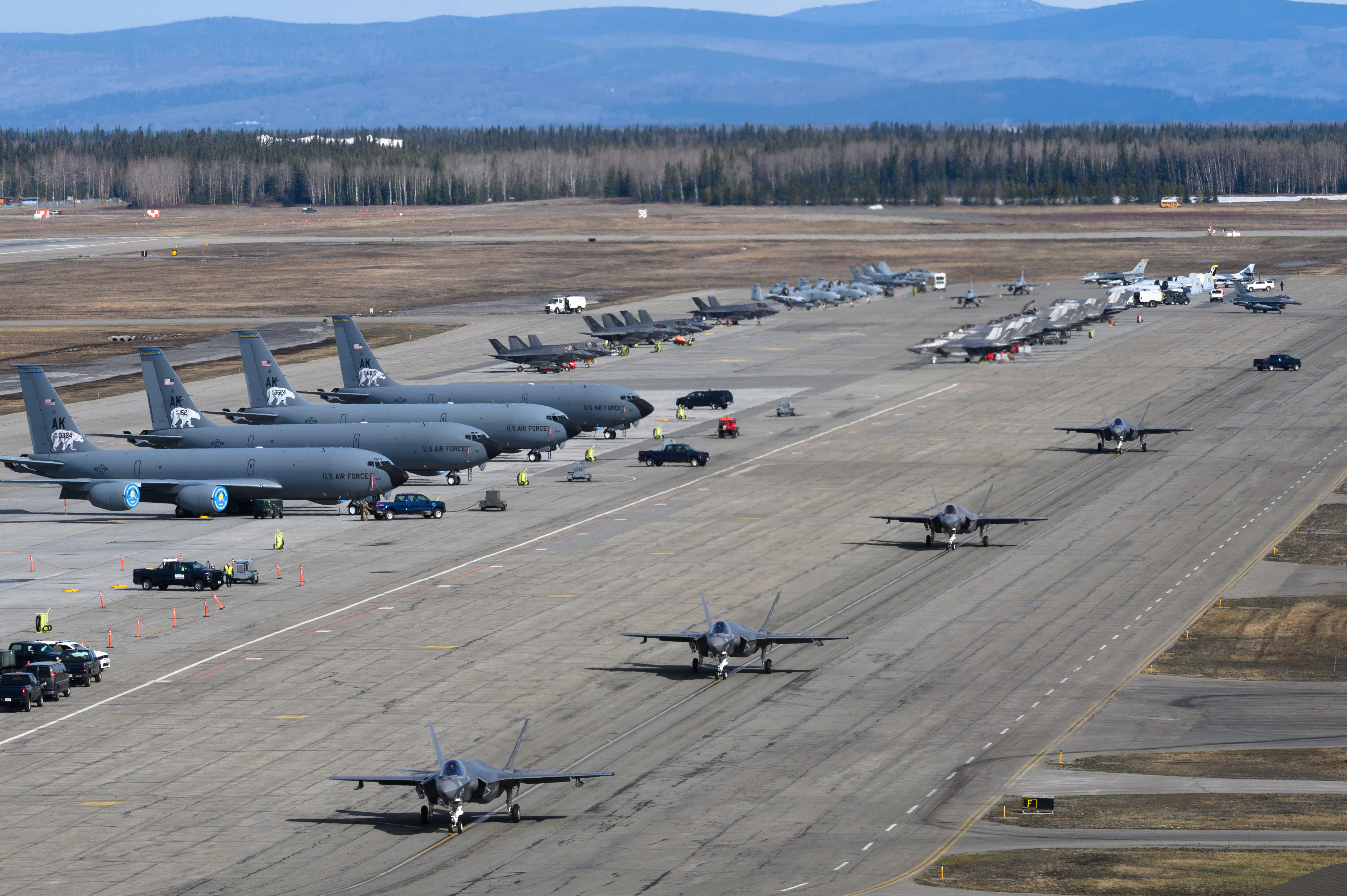
GTRI Researchers from across multiple Labs supported the Northern Edge 2023 (NE23-1) training exercise in Alaska from May 8 to May 19. The training exercise took place at the Joint Pacific Alaska Range Complex (JPARC).
Northern Edge 2023 involved thousands of U.S. service members, five ships and more than 150 aircraft at various locations in and around Alaska. The NE 23-1 contingency included service members from the U.S. Air Force, U.S. Navy, U.S. Marine Corps, Royal Air Force (UK), and Royal Australian Air Force. NE 23-1 provided the opportunity for U.S. military and allied personnel to sharpen their skills; practice tactics, techniques, and procedures; to improve command, control, and communication relationships; and develop cooperative plans and programs.
The large contingent of U.S. forces participants was joined by United Kingdom and Australian service members in the U.S. Indo-Pacific Command exercise, which provided an opportunity for joint, multinational, and multi-domain operations designed to provide high-end, realistic warfighter training, develop and improve joint interoperability, and enhance the combat readiness of participating forces. U.S. alliances and partnerships remain a critical defense relationship and a central pillar of all nations’ national security, based on shared values and a common commitment to peace and security.
“NE23-1 is a strong example of multilateral cooperation and demonstrates the U.S. commitment to the region by building interoperability, advancing common interests and a commitment to our Allies and partners in ensuring a free and open Indo-Pacific region,” according to Pacific Air Forces Public Affairs.
GTRI researchers supported the exercise from multiple locations, including Joint Base Elmendorf-Richardson and Eielson Air Force Base, among others. The exercise provided an opportunity for GTRI to showcase our talents and capabilities across multiple areas of air and ground systems research and development.
Great job to all!
Writer: Mike Naes, Orlando Field Office Manager (Reference 354th Fighter Wing Public Affairs)
Photo: Senior Airman Jose Miguel Tamondong





